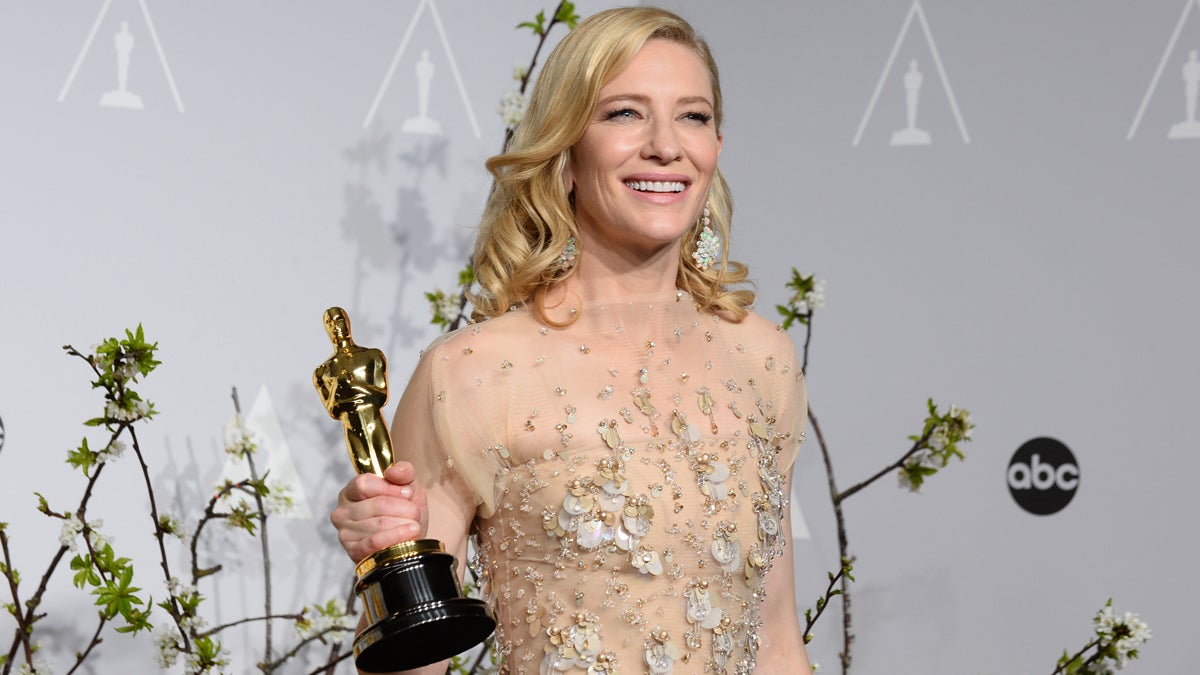Cate Blanchett was right: Women in movies are bringing home the bacon

Cate Blanchett is shown with the award for best actress in a leading role for "Blue Jasmine" during the Oscars on March 2, 2014. (Photo by Jordan Strauss/Invision/AP)
It’s common for Academy Award-winning actors to use their acceptance speech as an opportunity to highlight a cause close to their heart. At the Oscars on March 2, Best Actress winner Cate Blanchett put her own peers on the spot by challenging Hollywood to produce more films with female leads.
The “Blue Jasmine” star offered heartfelt thanks to Sony Pictures Classics “for so bravely and intelligently distributing the film and to the audiences who went to see it.” She then challenged the production studios and filmmakers who are, as she put it, “still foolishly clinging to the idea that female films with women at the center are niche experiences. They are not.”
“Audiences want to see them and, in fact, they earn money,” she declared. “The world is round, people!”
Pretty gutsy statement, Cate. And you’re right.
Woman-led films by the numbers
In 2013, three of the highest-grossing films of the year were led by female characters. The number-one film in America was “The Hunger Games: Catching Fire,” earning $424 million domestically. Disney’s female-led “Frozen” grossed $389 million, while the space epic Gravity took in $207 million.
It’s important to consider, however, that box office success is first and foremost defined by whether or not the film makes a profit — the amount of money made after the cost of producing the film is recouped. Oscar-nominees “The Wolf of Wall Street” and “Gravity” were made for $100 million apiece. To determine their profits, let’s do the math, based on the numbers as of February 23rd:
If “The Wolf of Wall Street” had box office earnings of $112 million, then its profit was $12 million.
If “Gravity” took in $207 million, then its profit was $107 million. In space, no one can hear the Wolf cry defeat.
Even more impressive are the profits made by last year’s Best Picture nominees spearheaded by female characters. “Zero Dark Thirty” made a profit of $55 million ($95 million total gross minus a budget of $40 million). “Beasts of the Southern Wild” was produced on a shoestring budget of $1.8 million and made $12 million (the highest return rate for a Best Picture nominee that year). “Brave,” the winner of Best Animated Film, made $237 million for a project that took $185 million to make. And 2012 Best Picture nominee “The Help,” made on a minuscule budget of $25 million, took in an impressive $169 million during its theatrical run.
Where the girls aren’t
Box office earnings and profits prove that women-led films make money. So why aren’t more of them being produced?
The answer — women in the film industry aren’t being given the same opportunities as their male counterparts. Men ran the 10 most profitable film production companies in 2013, while women represented only 16 percent of all directors, executive producers, producers, writers, cinematographers, and editors. Of the 250 top-grossing films of 2013, female filmmakers directed a measly 6 percent.
Oscar-nominated director Lexi Alexander put it best: “There is no lack of female directors … But there is a huge lack of people willing to give female directors opportunities.”
Men can direct romantic comedies and female-centric dramas, yet women are viewed with immense skepticism if they wish to helm movies in male-dominated genres like action and horror. Women’s views of men or their own gender are deemed unworthy.
This notion is reinforced by the kinds of projects being greenlit by production company CEOs. Looking at the roster of films coming soon, we see the Russell Crowe biblical epic Noah, another Arnold Schwarzenegger adventure, the one-millionth Godzilla incarnation, and another installment in the X-Men franchise. The only two mainstream movies featuring women in the lead coming out in the next few weeks include Nymphomaniac, a film where a woman is evaluated by her relationships to men, and Maleficent, which offers the backstory of a Disney villain.
C’mon, Hollywood. Whores and witches aren’t the only women worth watching.
Looking toward the future
The men with the money need to get with the program. The next generation of moviegoers needs a wider range of stories to enjoy. Production companies also need to consider who holds the purse strings in the American family. In addition to taking the lead as primary earners, women also manage household finances. Nielsen reported in 2013 that women’s spending power lies between $5 trillion and $15 trillion annually.
Cate Blanchett was right, and history has the numbers to prove it. Consider that the top-grossing film of all-time is not James Cameron’s Avatar, but the Civil War epic Gone with the Wind. Adjusted for inflation, the film that gave us Scarlett O’Hara grossed $1.6 billion. In 1939, in the midst of the worst Depression in history, the country eagerly gave its money to a Herculean chick flick.
Now that’s something to give a damn about.
WHYY is your source for fact-based, in-depth journalism and information. As a nonprofit organization, we rely on financial support from readers like you. Please give today.

